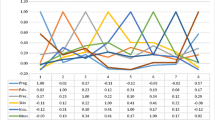Abstract
Artificial Intelligence (AI) is now a days gaining immense importance and is becoming a key technology in many fields ranging from banking industry, to travel industry, to communication industry, and to robotic industry. The use of AI in medical diagnosis too is becoming increasingly popular and has been widely used in the diagnosis of tumors, cancers, hepatitis, lung diseases, etc. Numerous algorithms have been designed that help in the process of decision making by analyzing the hidden patterns in previously held information. The main objective of this manuscript is to apply multiple algorithms to a problem in the domain of medical diagnosis and analyze their efficiency in predicting the results. The problem selected for the study is the diagnosis of diabetes. Authors have identified ten parameters that play an important role in diabetes and prepared a rich database of training data which served as the backbone of the prediction algorithms. Keeping in view this training data, authors implemented three algorithms [Naïve Bayes, artificial neural networks (ANN), and K-nearest neighbors (KNN)] and developed prediction models. To calculate the efficiency, the results of prediction system were compared with the actual medical diagnosis of the subjects. The results indicate that the ANN is the best predictor with the accuracy of about 96 % which was followed by Naïve Bayes networks having an accuracy of about 95 % and the KNN came to be the worst predictor having an accuracy of about 91 %.



Similar content being viewed by others
References
Anagnostou T, Remzi M, Lykourinas M, Djavan B (2003) Artificial neural networks for decision-making in urologic oncology. Eur Urol 43(6):596–603
Bharat Rao R, Bi J, Obuchowski N, Naidich D (2007) LungCAD: a clinically approved, machine learning system for lung cancer detection. In: International conference on knowledge discovery and data mining 2007, San Jose, California, USA, ACM 978-1-59593-609-7/07/0008
Bonham GS, Brock DB (1985) The relationship of diabetes with race, sex, and obesity. Am J Clin Nutr 41:776–783
Bratko I, Kononenko I (1987) Learning rules from incomplete and noisy data. In: Phelip B (ed) Interactions in artificial intelligence and statistical methods. Technical Press, Hampshire
Caruana R, Niculescu-Mizil A (2006) An empirical comparison of supervised learning algorithms. In: ICML ‘06 Proceedings of the 23rd international conference on machine learning, pp 161–168
Catlett J (1991) On changing continuous attributes into ordered discrete attributes. In: Proceedings of European working session on learning-91, Portugal, 4–6 Mar 1991, pp 164–178
Catto JWF, Linkens DA, Abbod MF, Chen M, Burton JL, Feeley KM, Hamdy FC (2003) Artificial intelligence in predicting bladder cancer outcome: a comparison of neuro-fuzzy modeling and artificial neural networks. Clin Cancer Res 9:4172
Chan JM, Rimm EB, Colditz GA, Stampfer MJ, Willett WC (1994) Obesity, fat distribution, and weight gain as risk factors for clinical diabetes in men. Diabetes Care 17(9):961–969
Chang C-L, Hsu M-Y (2009) The study that applies artificial intelligence and logistic regression for assistance in differential diagnostic of pancreatic cancer. Expert Syst Appl 36(7):10663–10672
Chiu J-S, Wang Y-F, Su Y-C, Wei L-H, Liao J-G, Li Y-C (2008) Artificial neural network to predict skeletal metastasis in patients with prostate cancer. Springer science + Business Media, May 2008
Clark P, Boswell R (1991) Rule Induction with CN2: some recent improvements. In: Proceedings of European working session on learning-91, Portugal, Mar 1991, pp 151–163
Harris M, Zimmet P (1997) Classification of diabetes mellitus and other categories of glucose intolerance. In: Alberti KGMM (ed) International textbook of diabetes mellitus, 2nd edn. Wiley, Chichester, pp 9–23
Haykin S (1998) Neural networks: a comprehensive foundation. ISBN: 0132733501. Prentice Hall, New Jersey
Hojker S, Kononenko I, Juka A, Fidler V, Porenta M (1998) Expert system’s development in management of thyroid disease. In: Proc. European congress for nuclear medicine, Milano, Sept 1988
Horn KA, Compton P, Lazarus L, Quinlan JR (1985) An expert system for interpretation of thyroid assays in clinical laboratory. Aust Comput J 17(1):7–11
Kern J, Dezelic G, Tezak-Bencic M, Durrigl T (1990) Medical decision making using inductive learning program. In: Proceedings of 1st congress on Yougoslav medical informatics, Beogard, 6–8 Dec 1990, pp 221–228
Lesmo L, Saitta L, Torasso P (1983) Fuzzy production rules: a learning methodology. In: Advances in fuzzy sets, possibility theory and applications. pp 181–198
Lindley CA (2012) Neurobiological computation and synthetic intelligence. In: Artificial intelligence and simulation of behavior, AISB/IACAP world congress 2012, Birmingham, UK, 2–6 July 2012, pp 20–25
Lisboa PJ, Taktak AF (2006) The use of artificial neural networks in decision support in cancer: a systematic review. Elsevier Neural Netw 19:408–415
Mahamud K, Abu Bakar A, Norwawi NM (1999) Multilayer perceptron modeling in housing market. Malays Manage J 3:61–69
Nunez M (1990) Decision tree induction using domain knowledge. In: Wielinga B, Boose J, Gaines B, Schreiberg G, Someren Van M (eds) Current trends in knowledge acquisition. IOS Press, Amsterdam
Pickup JC, Crook MA (1998) Is Type II diabetes mellitus a disease of the innate immune system? Diabetologia 41(10):1241–1248
Ramesh AN, Kambhampati C, Monson JR, Drew PJ (2004) Artificial intelligence in medicine. Ann R Coll Surg Engl 86(5):334–338
Rimm EB, Chan J, Stampfer MJ, Colditz GA, Willett WC (1995) Prospective study of cigarette smoking, alcohol use, and the risk of diabetes in men. BMJ 310(6979):555–559
Sarwar A, Sharma V (2012) Intelligent Naïve Bayes approach to diagnose diabetes Type-2. International Journal of Computer Applications, IJCA Special Edition Nov 2012 ISBN:973-93-80870-10-6, pp 14–16
Wannamethee SG, Camargo CA, Manson JAE, Willett WAC (2003) Alcohol drinking patterns and risk of type 2 diabetes mellitus among younger women. Sci Direct Arch Intern Med 163:1329–1336
Author information
Authors and Affiliations
Corresponding author
Rights and permissions
About this article
Cite this article
Sarwar, A., Sharma, V. Comparative analysis of machine learning techniques in prognosis of type II diabetes. AI & Soc 29, 123–129 (2014). https://doi.org/10.1007/s00146-013-0456-0
Received:
Accepted:
Published:
Issue Date:
DOI: https://doi.org/10.1007/s00146-013-0456-0




